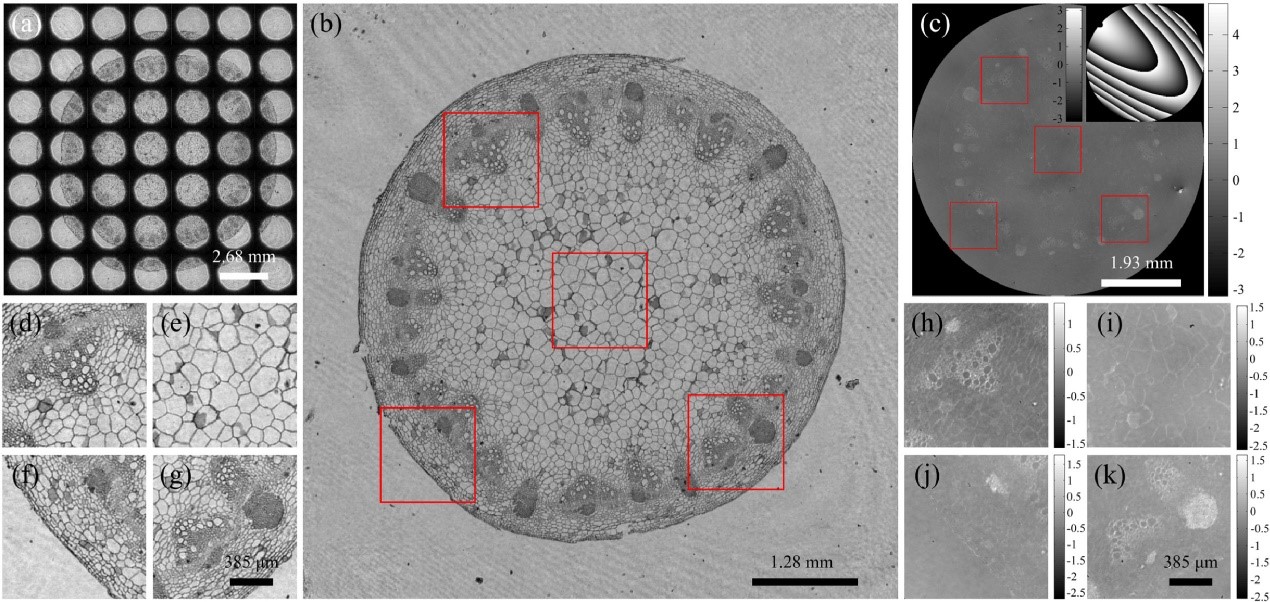Based on the strong phase modulation introduced by a pre-characterized wave modulator, coherent modulation imaging (CMI) is an alternative approach for achieving single-shot phase imaging with a fast convergence speed. However, the signal-to-noise ratio (SNR) of CMI is lower than expected in practice, which is a serious problem for practical applications. In addition, the FOV of CMI is limited by the size of the incident wave. This significantly limits the practical application.
Recently, researchers from Shanghai Institute of Optics and Fine Mechanics of the Chinese Academy of Sciences (CAS) have proposed a new scheme (eFOV-CMI) of phase retrieval with extended field of view based on continuous phase modulation. The research progress was published on Ultramicroscopy.
In the experiment, differing from previous algorithm, a weak scattering modulator, rather than binary random phase modulator with strong scattering ability, was used. Compared with binary random phase modulator, the diffraction pattern of weak scattering modulator has no high-order diffractions. Besides, the concept of partial saturation was introduced to the diffraction pattern, which could overcome the limited dynamic range of detector and help to record much more diffractive information.
Combining specific iterative algorithm, these two important concepts helped to realize phase retrieval with weak modulation and overthrow the previous viewpoint that a random modulator with strong scattering ability is essential for single-shot phase imaging. Furthermore, the SNR of final reconstructions could be improved as well according to the comparisons with traditional CMI.
In addition, based on the single-shot phase imaging with weak modulation, the extended field of view obtained in a non-iterative manner was proposed, which is also different from ptychographic iterative engine (PIE). The random speckle noise introduced by a coherent light could be restrained obviously, as well as the signal-to-noise ratio compared with ptychography.
This new algorithm is hoped to make it easy for single-shot or extended FOV phase imaging with high SNR and high resolution in practical use.
This work is founded by National Natural Science Foundation of China, National Innovation Fund, Scientific Instrument Developing Project of the Chinese Academy of Sciences. 
Fig. 1 Experiment results.(Image by SIOM)

Fig. 2 The reconstructed transmission function of the specimen with the extended FOV.(Image by SIOM)
Article website:
https://doi.org/10.1016/j.ultramic.2019.05.002
Contact:
Mr. Cao Yong
General Administrative Office
Shanghai Institute of Optics and Fine Mechanics, CAS
Email: caoyong@siom.ac.cn |







